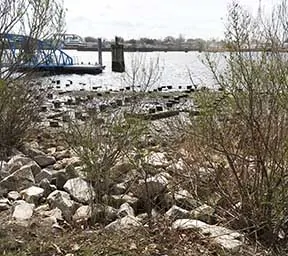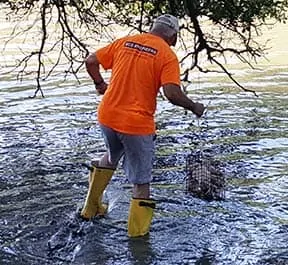

Creosote is a toxic chemical that has been commonly used as a wood preservative for over 50 years. It acts as a pesticide, herbicide, and fungicide and has been used widely in both land and marine applications.

Studies have indicated that pilings and other artificial structures provide possible environmental benefits, such as habitat for invertebrates, roosts for birds, and a spawning location for certain fish species (e.g., herring). However, far more studies have indicated potential harm from treated structures. It is documented that pilings will leach the most during the first two years after installation after which leaching declines significantly.
The Norfolk Riverfront area has been developed since at least 1887, and the use of treated pilings can be presumed. The majorities of the pilings are presumed to
have been installed over two years ago and are therefore beyond the 2-year timeframe for significant leaching. Pilings that are shown to be in good condition and with a viable use as part of the development effort can remain in place with little effect on the surrounding environment.
This paper discusses the City of Norfolk’s waterfront brownfield redevelopment and the importance of understanding and developing an approach for the managed disposal of creosote pilings. The guidance is based on strategies approved by the U.S. Environmental Protection Agency and other noted expert sources such as waterfront municipalities, published white papers, and peer-reviewed publications.
Take me to the paper and information about the authors.

Other environmental groups are hard at work in the region. Lynnhaven River NOW, is one organization working with residents, businesses, and community leaders who are restoring and protecting Virginia Beach waterways.
Learn more here: http://www.lynnhavenrivernow.org/